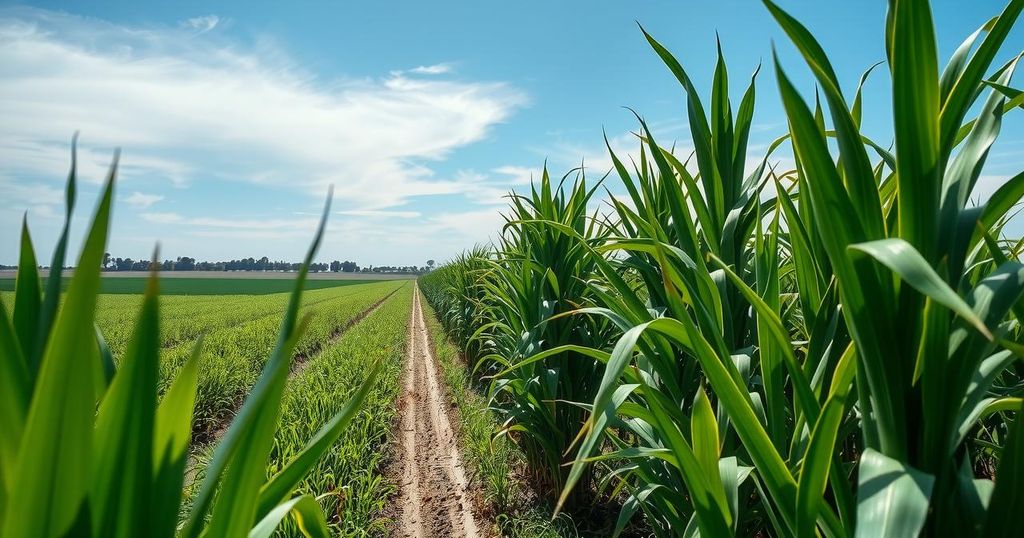Sugar Prices Rally Amid Brazilian Crop Concerns and Global Supply Dynamics

Sugar prices are rising, driven by concerns over Brazil’s underdeveloped sugarcane due to drought. The Brazilian real’s strength is contributing to this trend, while forecasts predict a shift to a global surplus in the near future. India’s projected decrease in sugar production also supports current price levels, despite concerns from Thailand’s increase in production capabilities.
Sugar prices are experiencing a moderate increase, with March NY world sugar 11 (SBH25) rising by 1.92% and London ICE white sugar 5 (SWH25) up by 0.31%. The surge is primarily fueled by concerns over Brazil’s sugar crop due to insufficient rainfall leading to underdeveloped sugarcane. Alvean, a key player in sugar trading, warned that continued weak precipitation could delay the sugar harvest beginning in April and adversely impact production.
The Brazilian real’s strength has compounded the upward price movement, leading to fund short covering, as sugar prices reached an 8-week high last week. This is occurring just before the last trading day for the March London sugar contract. Additionally, India’s sugar production forecast down by 12.2% compared to last year also reinforces upward pressure on prices, while Brazil’s robust export potential remains constrained due to currency rates.
Despite these price increases, there are bearish signals looming over the sugar market. Green Pool Commodity Specialists have projected a swing to a global sugar surplus of 2.7 million metric tons in the 2025/26 crop year, contrasting sharply with the anticipated deficit of 3.7 million metric tons in 2024/25. Historical price trends over the last several months have indicated a downtrend, with notable lows in January.
India’s governmental easing of sugar export restrictions may provide additional downward pressure on prices as it allowed mills to export 1 million metric tons of sugar, despite prior restrictions. This is notable given the country’s past allowance of record exports in preceding years. The International Sugar Organization recently adjusted its forecasts for global sugar supply and demand, reflecting an improved global sugar supply outlook.
In Thailand, increased anticipated production by 18% to 10.35 million metric tons is again bearish for prices. However, the overall market sentiment has been mixed as Czarnikow has recently downgraded its projections for Thailand’s production. Past droughts severely impacted Brazilian sugar crops, with significant losses reported due to fires and unfavorable weather conditions.
Overall, a notable decrease in India’s sugar production is anticipated. Reports indicate an expected drop of 15% year-on-year to a five-year low of 27.27 million metric tons. As the global landscape adjusts, significant variations in production and export dynamics are translating into price ramifications in the sugar market across the globe.
In summary, sugar prices are currently rising due to concerns regarding Brazil’s sugar output impacted by dry weather, coupled with favorable currency movements for Brazilian producers. Conversely, projections of a global sugar surplus and increasing production estimates from major producers like Thailand and India could challenge the sustainability of these price increases. The global sugar market is evolving with varying regional influences that will shape future pricing dynamics.
Original Source: www.tradingview.com






